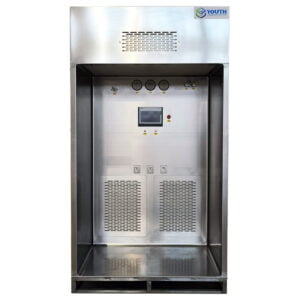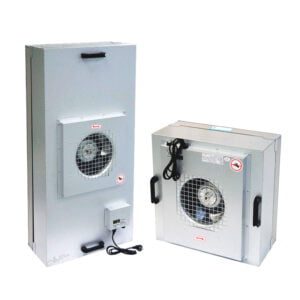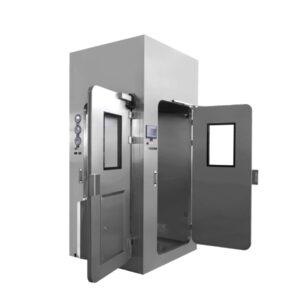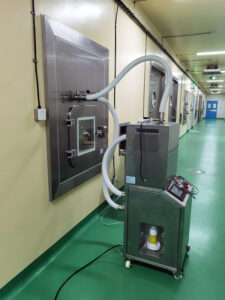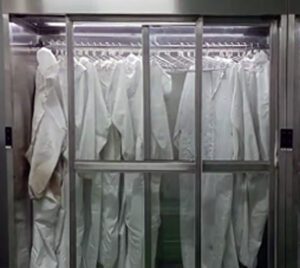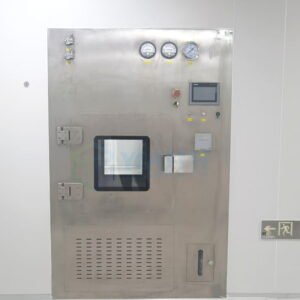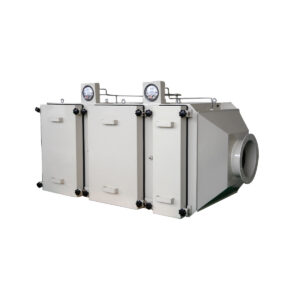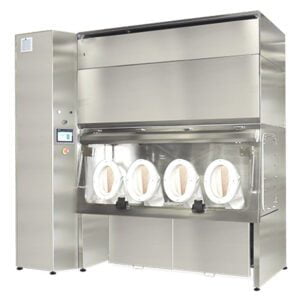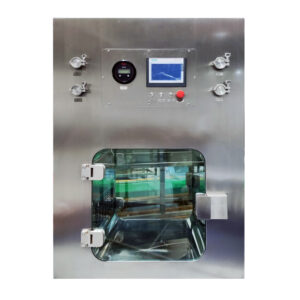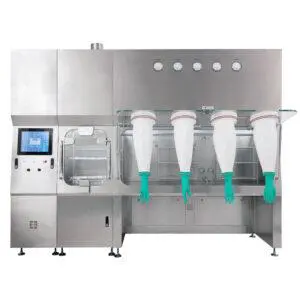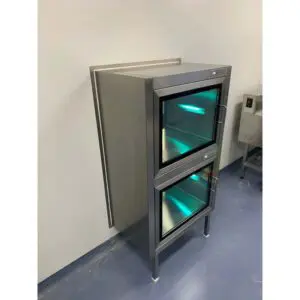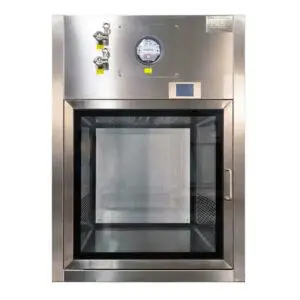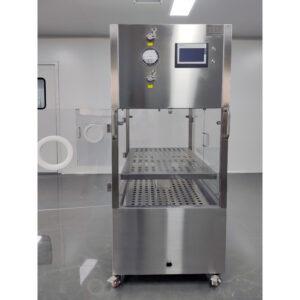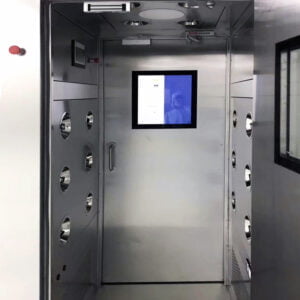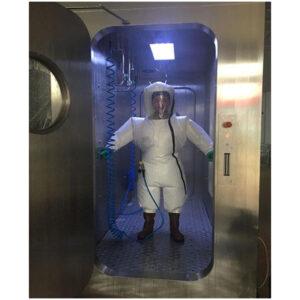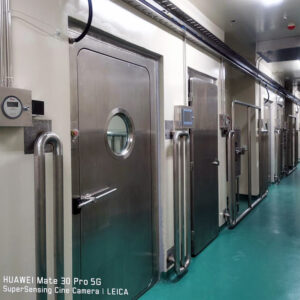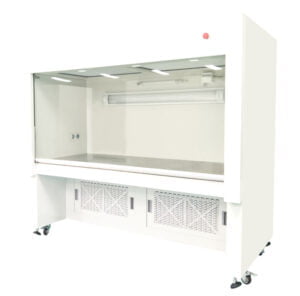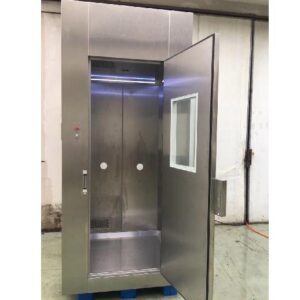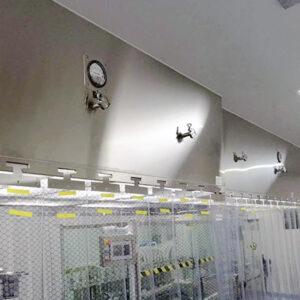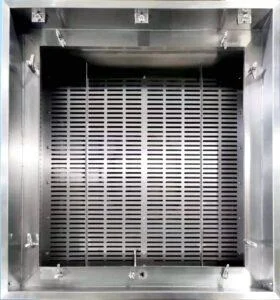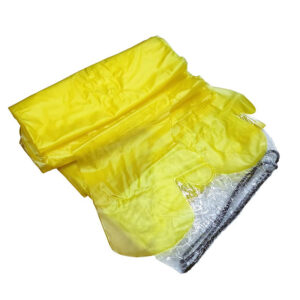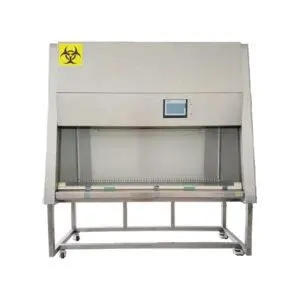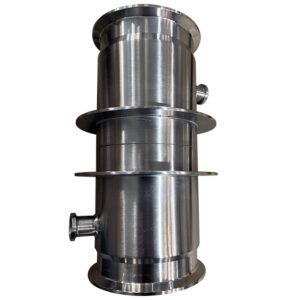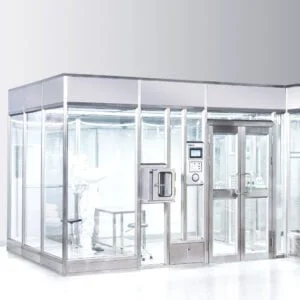As a leading expert in water purification systems, I'm excited to share with you some invaluable tips for maintaining your BIBO system. Proper maintenance is crucial for ensuring the longevity and optimal performance of your water dispenser. By following these seven essential maintenance tips, you'll not only extend the life of your BIBO system but also guarantee that you and your family continue to enjoy clean, refreshing water for years to come.
In this comprehensive guide, we'll explore the key aspects of BIBO system maintenance, from regular cleaning routines to filter replacements and troubleshooting common issues. Whether you're a new BIBO owner or a long-time user looking to optimize your maintenance routine, this article will provide you with the knowledge and tools you need to keep your system running smoothly.
Before we dive into the specifics, it's important to understand that maintaining your BIBO system is not just about preserving its functionality. It's about safeguarding your investment in clean, safe drinking water and ensuring that your system continues to deliver the high-quality water you expect. Regular maintenance also helps prevent potential problems before they arise, saving you time, money, and hassle in the long run.
"Proper maintenance is the key to unlocking the full potential of your BIBO system, ensuring years of reliable service and pristine water quality."
Now, let's explore the seven essential maintenance tips that will help you keep your BIBO system in top condition.
1. How often should you clean your BIBO system?
Maintaining a clean BIBO system is fundamental to its performance and longevity. Regular cleaning not only ensures the purity of your water but also prevents the buildup of minerals and bacteria that can affect the taste and safety of your drinking water.
For optimal results, it's recommended to clean your BIBO system on a weekly basis. This routine cleaning involves wiping down the exterior of the machine with a soft, damp cloth to remove any dust or fingerprints. Pay special attention to the dispensing area, as this is where water droplets can accumulate and potentially harbor bacteria.
"Weekly cleaning of your BIBO system is essential for maintaining water quality and preventing the growth of harmful microorganisms."
To make your cleaning routine more effective, consider creating a simple maintenance schedule. Here's a suggested cleaning frequency for different parts of your BIBO system:
| Component | Cleaning Frequency |
|---|---|
| Exterior | Weekly |
| Drip Tray | Weekly |
| Dispensing Spout | Bi-weekly |
| Water Tank | Monthly |
| Internal Pipes | Quarterly |
By adhering to this cleaning schedule, you'll ensure that every part of your BIBO system remains in pristine condition, contributing to its overall longevity and performance.
2. What are the best cleaning practices for the BIBO system?
When it comes to cleaning your BIBO system, using the right methods and products is crucial. Harsh chemicals can damage the system's components and potentially contaminate your water supply. Instead, opt for gentle, food-safe cleaning solutions that effectively sanitize without leaving harmful residues.
For daily cleaning, a mixture of warm water and mild dish soap is usually sufficient. For a deeper clean, you can use a solution of equal parts water and white vinegar. This natural disinfectant is effective at removing mineral deposits and killing bacteria without introducing harmful chemicals to your system.
"Using gentle, food-safe cleaning solutions is essential for maintaining the integrity of your BIBO system and ensuring the safety of your drinking water."
Here's a step-by-step guide for a thorough cleaning of your BIBO system:
- Unplug the system and remove any removable parts, such as the drip tray and water tank.
- Wash these parts with warm, soapy water and rinse thoroughly.
- Wipe down the exterior of the machine with a damp cloth.
- Use a soft brush or cloth to clean the dispensing spout, paying extra attention to any nooks or crevices.
- For the internal components, run a cleaning cycle using the vinegar solution, following the manufacturer's instructions.
- Rinse the system thoroughly by running several cycles of plain water through it.
- Reassemble the machine and plug it back in.
Remember, proper cleaning techniques are an integral part of BIBO system maintenance tips. By following these best practices, you'll ensure that your system continues to deliver clean, great-tasting water for years to come.
3. How do you properly replace filters in a BIBO system?
Filter replacement is a critical aspect of BIBO system maintenance. Over time, filters become less effective at removing contaminants, which can impact the taste and quality of your water. Understanding when and how to replace your filters is essential for maintaining optimal performance.
Most BIBO systems use a combination of carbon and sediment filters. The frequency of replacement depends on your water usage and the quality of your local water supply. As a general rule, it's recommended to replace filters every 6 to 12 months.
"Regular filter replacement is crucial for maintaining water quality and ensuring the longevity of your BIBO system."
Here's a step-by-step guide for replacing filters in your BIBO system:
- Turn off the water supply and unplug the system.
- Locate the filter housing units, typically found at the back or bottom of the machine.
- Release any pressure in the system by running water from the dispenser until it stops flowing.
- Open the filter housing units using the provided tool or by hand.
- Remove the old filters, noting their orientation.
- Insert the new filters, ensuring they're properly aligned and seated.
- Close the filter housing units securely.
- Reconnect the water supply and plug in the system.
- Run water through the system for several minutes to flush out any air and residual carbon particles.
| Filter Type | Replacement Frequency | Signs of Needed Replacement |
|---|---|---|
| Carbon Filter | 6-12 months | Change in water taste or odor |
| Sediment Filter | 6-12 months | Reduced water flow |
| UV Lamp (if applicable) | 12-18 months | Indicator light or reduced effectiveness |
By following these guidelines and paying attention to the signs that your filters need replacement, you'll ensure that your BIBO system continues to deliver high-quality water. Remember, proper filter maintenance is key to the overall health and longevity of your system.
4. What routine checks should be performed on a BIBO system?
Regular checks are essential for identifying potential issues before they become serious problems. By implementing a routine inspection schedule, you can catch minor issues early and prevent costly repairs or system failures.
A comprehensive check of your BIBO system should be performed at least once a month. This involves inspecting various components for signs of wear, leaks, or unusual operation. Pay close attention to connections, seals, and moving parts, as these are often the first to show signs of deterioration.
"Monthly inspections are crucial for maintaining the health of your BIBO system and preventing unexpected breakdowns."
Here's a checklist of items to inspect during your routine check:
- Water connections: Look for any signs of leaks or loose fittings.
- Dispensing spout: Check for any blockages or mineral buildup.
- Drip tray: Ensure it's clean and properly positioned.
- Water tank: Inspect for cracks or signs of wear.
- Control panel: Verify all buttons and indicators are functioning correctly.
- Water flow: Check that water is dispensing at the expected rate.
- Temperature: Ensure hot and cold water are at the correct temperatures.
| Component | What to Check | Frequency |
|---|---|---|
| Water Connections | Leaks, loose fittings | Monthly |
| Dispensing Spout | Blockages, mineral buildup | Monthly |
| Drip Tray | Cleanliness, positioning | Weekly |
| Water Tank | Cracks, wear | Monthly |
| Control Panel | Button functionality | Monthly |
| Water Flow | Dispensing rate | Monthly |
| Temperature | Hot and cold water accuracy | Monthly |
By incorporating these routine checks into your maintenance schedule, you'll be able to keep your BIBO system running smoothly and efficiently. Remember, prevention is always better than cure when it comes to maintaining your water purification system.
5. How can you troubleshoot common BIBO system issues?
Even with regular maintenance, you may occasionally encounter issues with your BIBO system. Being able to troubleshoot common problems can save you time and potentially avoid costly repairs. Many issues can be resolved with simple fixes, and understanding these can help you maintain your system more effectively.
Some of the most common issues BIBO users face include reduced water flow, temperature inconsistencies, and unusual noises. In many cases, these problems can be addressed without professional help, provided you follow the correct troubleshooting steps.
"Understanding how to troubleshoot common issues is an essential part of BIBO system maintenance, empowering users to quickly resolve minor problems and maintain optimal performance."
Here are some common issues and their potential solutions:
Reduced water flow:
- Check and clean the dispensing spout
- Inspect filters for clogging and replace if necessary
- Verify water supply is fully open
Temperature inconsistencies:
- Ensure the system is plugged in and power is on
- Check temperature settings on the control panel
- Allow sufficient time for water to heat or cool
Unusual noises:
- Check for loose components or fittings
- Ensure the system is level on a flat surface
- Verify proper water pressure
| Issue | Possible Causes | Troubleshooting Steps |
|---|---|---|
| No water flow | Clogged filter, closed water supply | Replace filter, check water supply |
| Leaking | Loose connections, damaged seals | Tighten connections, replace seals |
| Poor taste | Old filter, system needs cleaning | Replace filter, run cleaning cycle |
| No hot water | Heating element issue, power problem | Check power, contact support if persistent |
Remember, if you're unable to resolve an issue through these troubleshooting steps, it's best to contact YOUTH customer support or a certified technician. Attempting complex repairs without proper knowledge can potentially damage your system or void your warranty.
6. What role does water quality play in BIBO system maintenance?
The quality of water entering your BIBO system plays a significant role in its overall maintenance and longevity. Different water sources can contain varying levels of minerals, sediments, and other contaminants that can affect your system's performance over time.
Hard water, which contains high levels of minerals like calcium and magnesium, can lead to scale buildup in your BIBO system. This buildup can reduce efficiency, clog filters more quickly, and potentially damage internal components. On the other hand, water with high sediment content can quickly clog filters and reduce water flow.
"Understanding and addressing your local water quality is crucial for optimizing your BIBO system's performance and extending its lifespan."
To address water quality issues and their impact on your BIBO system:
- Have your water tested to understand its composition.
- Consider installing a pre-filter or water softener if you have hard water.
- Adjust your filter replacement schedule based on your water quality.
- Use the appropriate filters for your specific water conditions.
| Water Type | Potential Issues | Maintenance Implications |
|---|---|---|
| Hard Water | Scale buildup, reduced efficiency | More frequent descaling, potential for additional filtration |
| High Sediment | Clogged filters, reduced flow | More frequent filter changes, possible pre-filtration needed |
| Chlorinated | Taste issues, potential damage to components | Specific carbon filter may be required, more frequent replacements |
| Well Water | Bacteria, minerals, sediment | May require additional filtration steps, more frequent testing |
By taking your water quality into account and adjusting your maintenance routine accordingly, you can significantly improve the performance and lifespan of your BIBO system. Remember, proactive maintenance based on your specific water conditions is key to ensuring your system continues to deliver clean, great-tasting water.
7. How does proper storage impact BIBO system longevity?
Proper storage of your BIBO system when not in use for extended periods is crucial for maintaining its performance and extending its lifespan. Whether you're going on vacation or shutting down the system for seasonal reasons, following the correct storage procedures can prevent damage and ensure your BIBO is ready to use when you return.
Improper storage can lead to issues such as bacterial growth, mineral deposits, and damage to internal components. By taking the time to properly prepare your BIBO system for storage, you can avoid these problems and maintain the quality of your water purification system.
"Correct storage procedures are essential for preserving the integrity of your BIBO system during periods of disuse, ensuring it's ready to deliver clean, safe water upon your return."
Here's a step-by-step guide for storing your BIBO system:
- Run a cleaning cycle to sanitize the system.
- Drain all water from the tanks and lines.
- Unplug the system and disconnect from the water supply.
- Remove and clean all removable parts.
- Dry all components thoroughly.
- Store the system in a cool, dry place away from direct sunlight.
- Cover the system to protect it from dust.
| Storage Duration | Preparation Steps | Reactivation Process |
|---|---|---|
| Short-term (1-2 weeks) | Drain water, clean exterior | Run water for 2-3 minutes before use |
| Medium-term (2-4 weeks) | Full cleaning cycle, drain completely | Run cleaning cycle, replace filters if needed |
| Long-term (1 month+) | Full cleaning, remove filters, dry thoroughly | Deep clean, install new filters, sanitize |
When reactivating your BIBO system after storage, it's important to run a full cleaning cycle and check all components before use. This ensures that any potential contaminants that may have accumulated during storage are removed, and your system is ready to provide clean, safe water once again.
By following these storage guidelines, you can significantly extend the life of your BIBO system and ensure it continues to perform at its best, even after periods of disuse. Proper storage is an often overlooked but crucial aspect of BIBO system maintenance tips.
Conclusion
Maintaining your BIBO system is essential for ensuring its longevity and continued performance. By following these seven maintenance tips, you can keep your water dispenser in top condition, providing clean, refreshing water for years to come. Regular cleaning, timely filter replacements, routine checks, and proper troubleshooting are all key components of effective BIBO system care.
Remember, the quality of your water and how you store your system when not in use also play significant roles in its overall health. By taking a proactive approach to maintenance and addressing potential issues early, you can avoid costly repairs and ensure that your BIBO system continues to deliver the high-quality water you expect.
Implementing these maintenance tips will not only extend the life of your BIBO system but also guarantee that you and your family always have access to clean, safe drinking water. With proper care and attention, your BIBO system will remain a reliable source of purified water for many years to come.
External Resources
- BIBO Water Bar User Manual – Comprehensive guide on using and maintaining BIBO Water Bar systems.
- Water Filter Maintenance Tips – General advice on maintaining water filtration systems, applicable to BIBO systems.
- EPA's Guide to Drinking Water Treatment – Information on water treatment technologies and maintenance.
- Water Quality Association – Filtration Facts – Educational resource on water filtration and system maintenance.
- CDC's Guide to Water Treatment – Information on home water treatment systems and their maintenance.
- American Water Works Association – Professional association providing resources on water quality and treatment.
Related Contents:
- Step-by-Step BIBO System Installation Guide
- Water Quality in Chemical Showers: Management Tips
- Essential BIBO System Components Explained
- Bag-In/Bag-Out (BIBO) Systems: Operation and Maintenance Guide
- Troubleshooting BIBO Filter Housing Issues: A Comprehensive Guide
- Maintaining BIBO Filter Housings: Best Practices for Optimal Performance
- BIBO Systems: Enhancing Lab Safety & Efficiency
- The Cost-Effectiveness of BIBO Systems in Industrial Applications
- BIBO vs. Traditional Containment: Which is Better?

